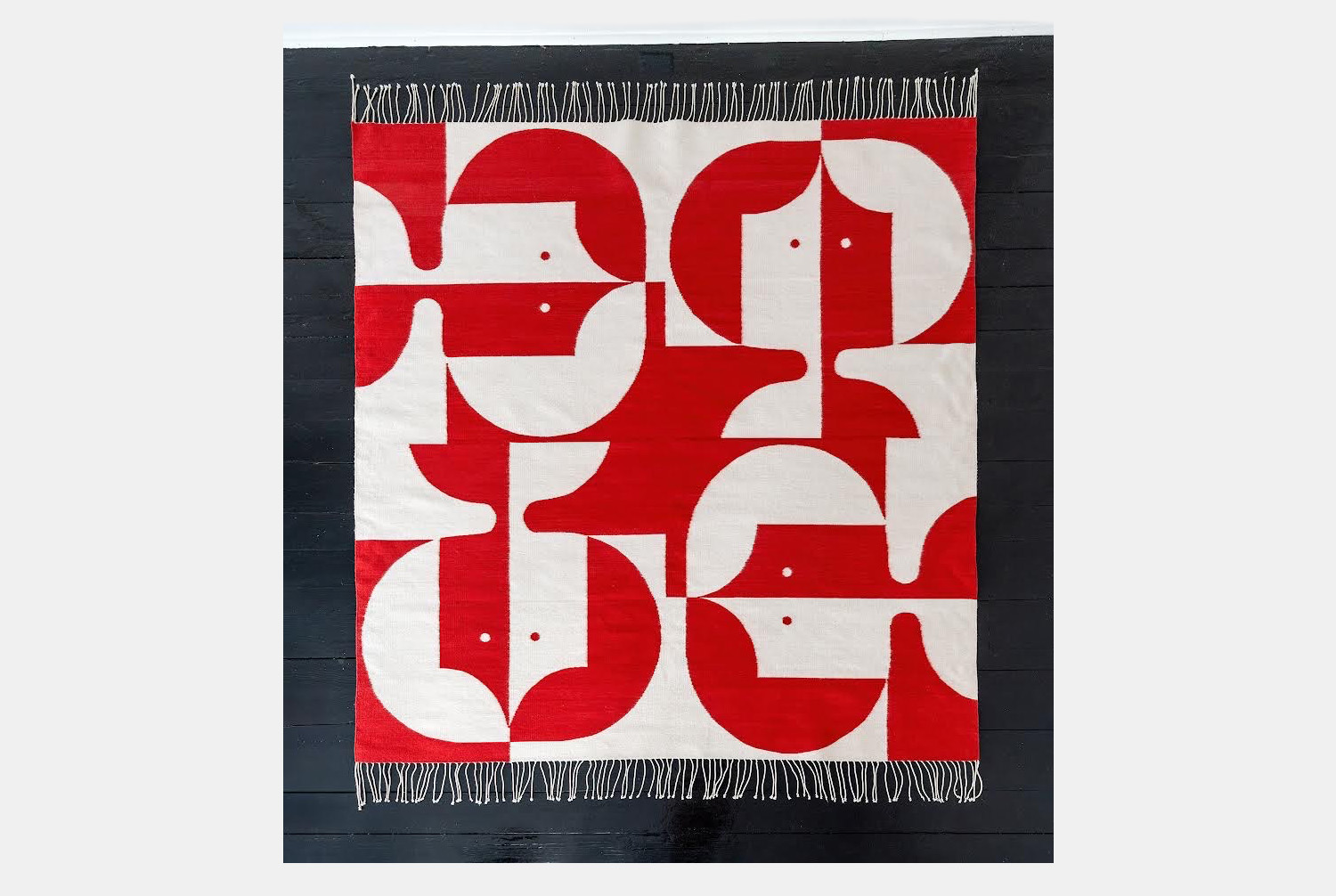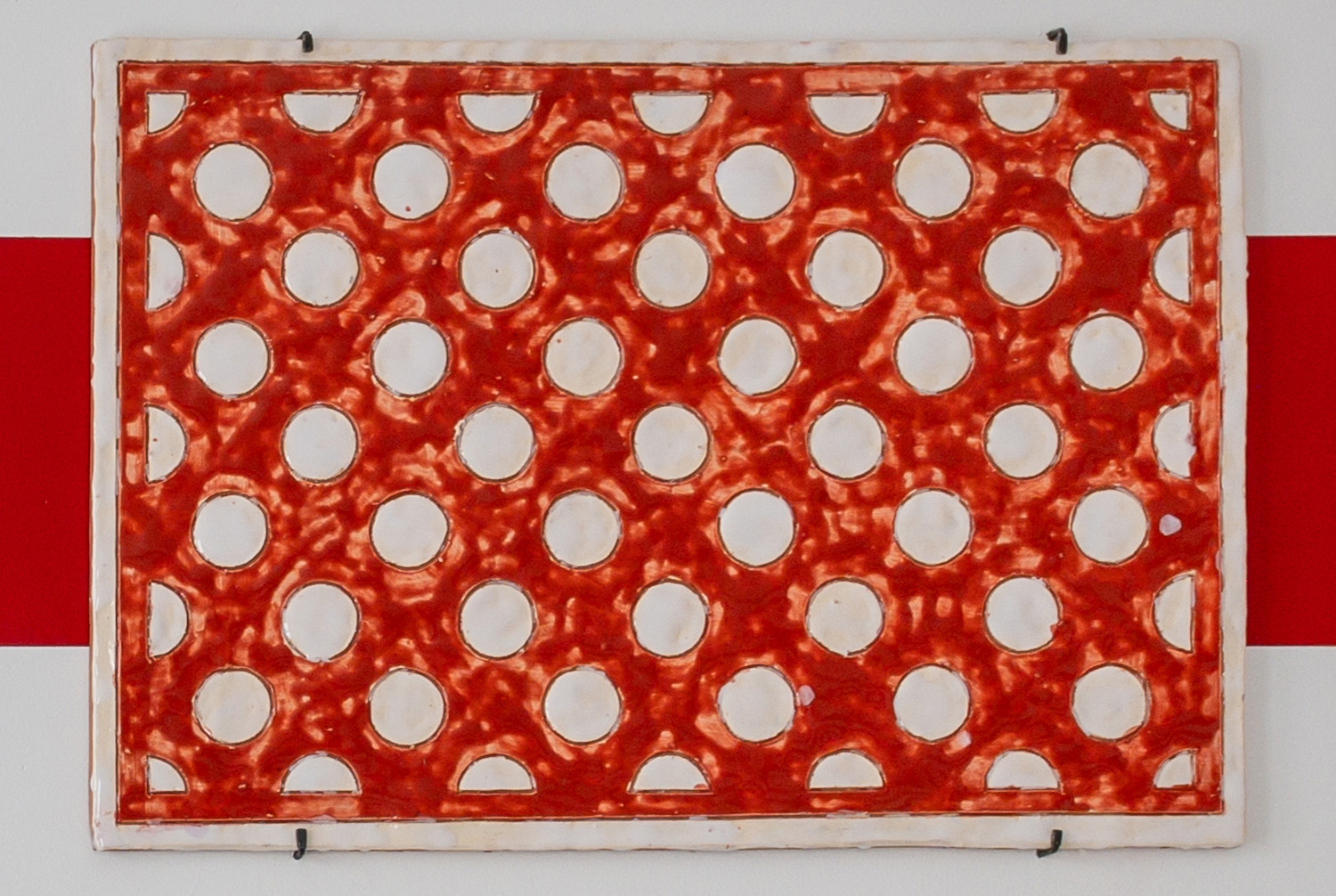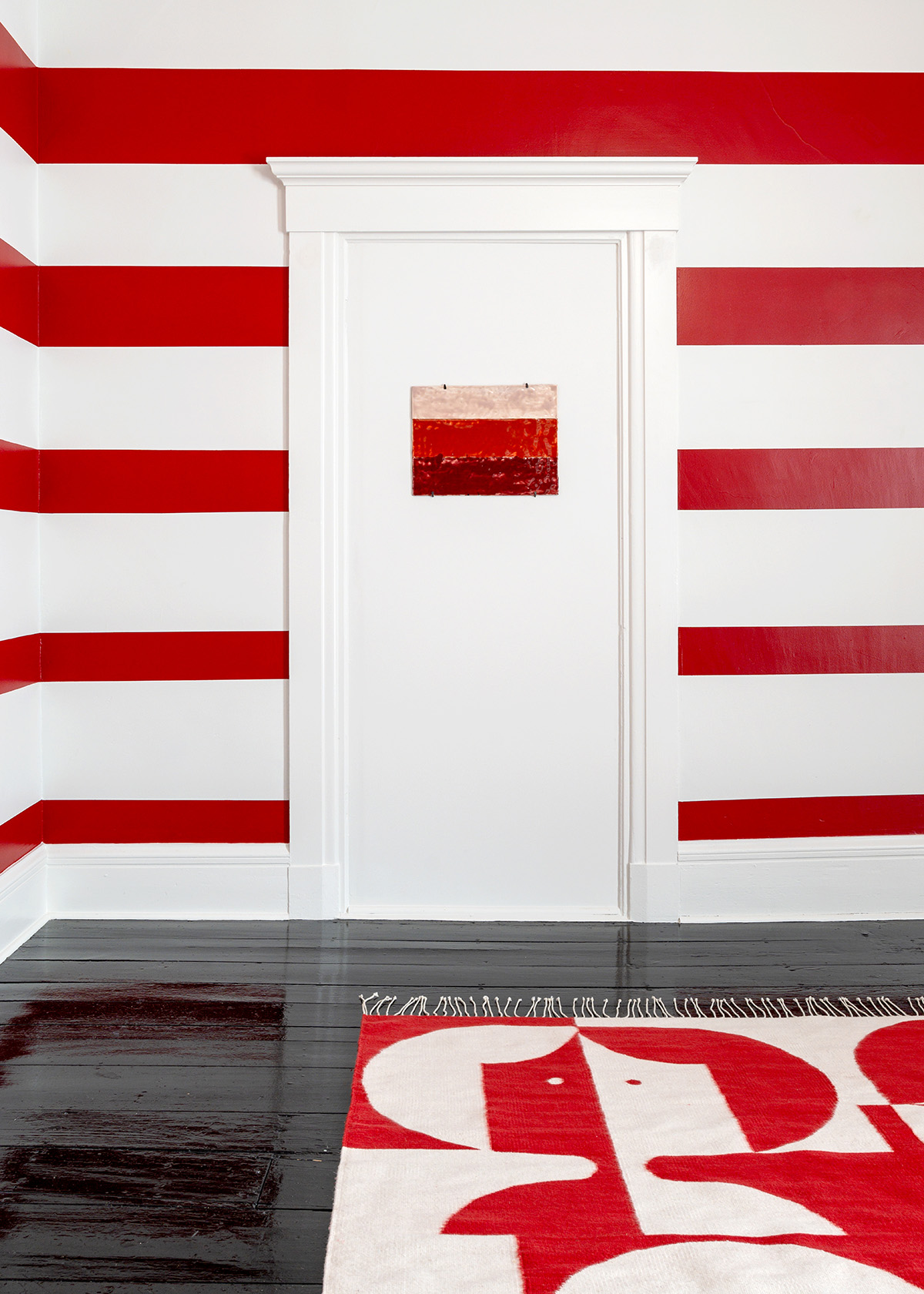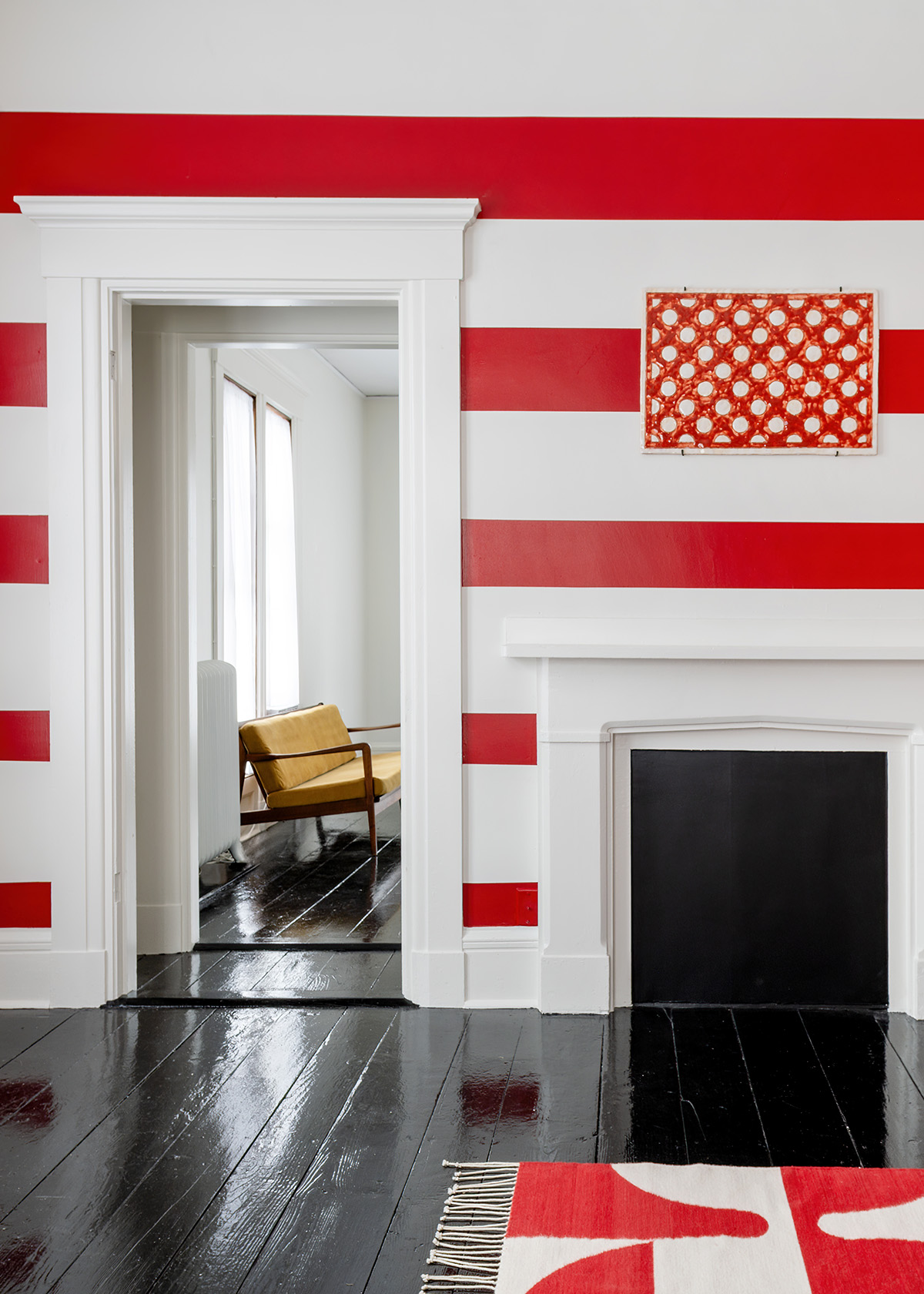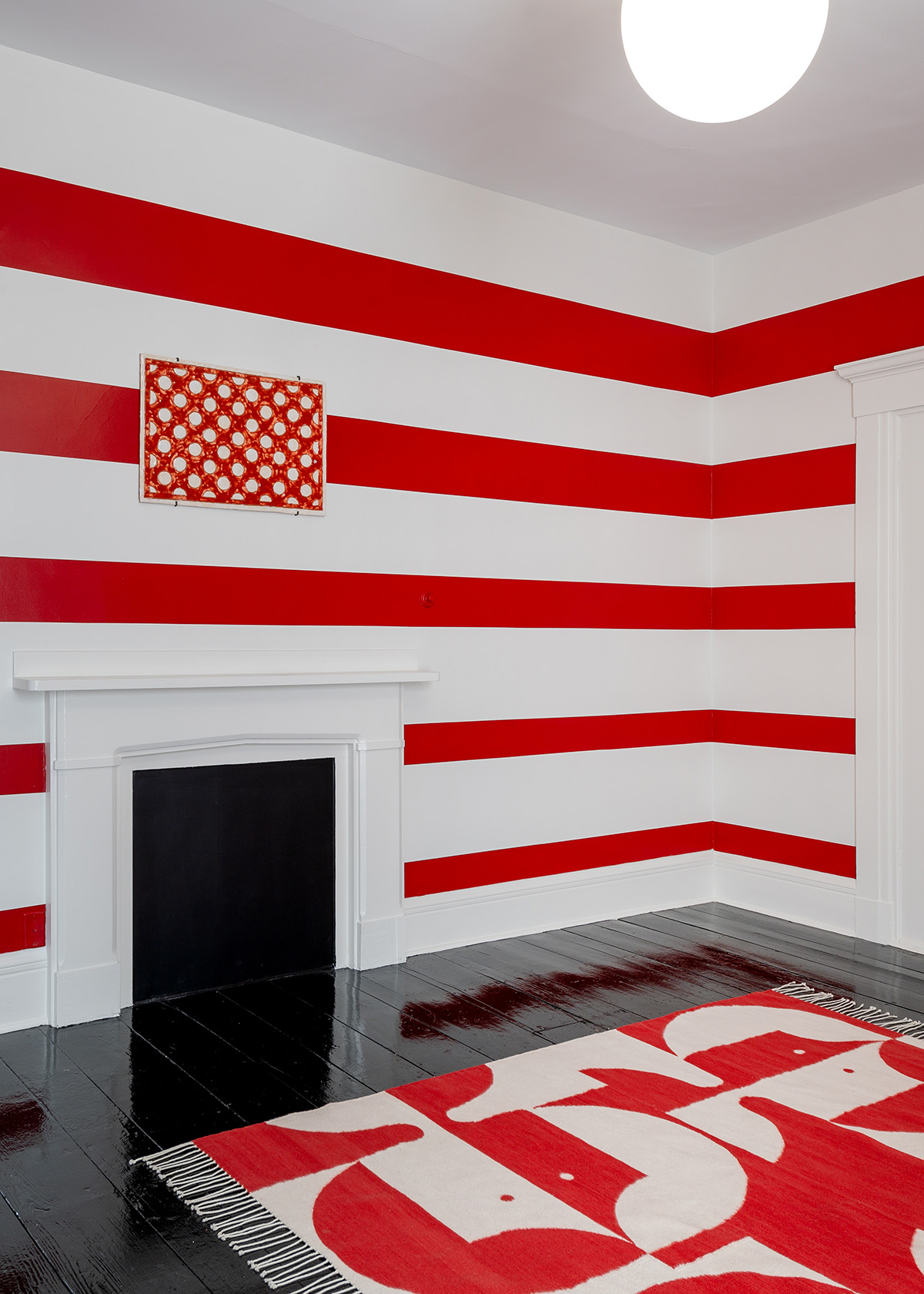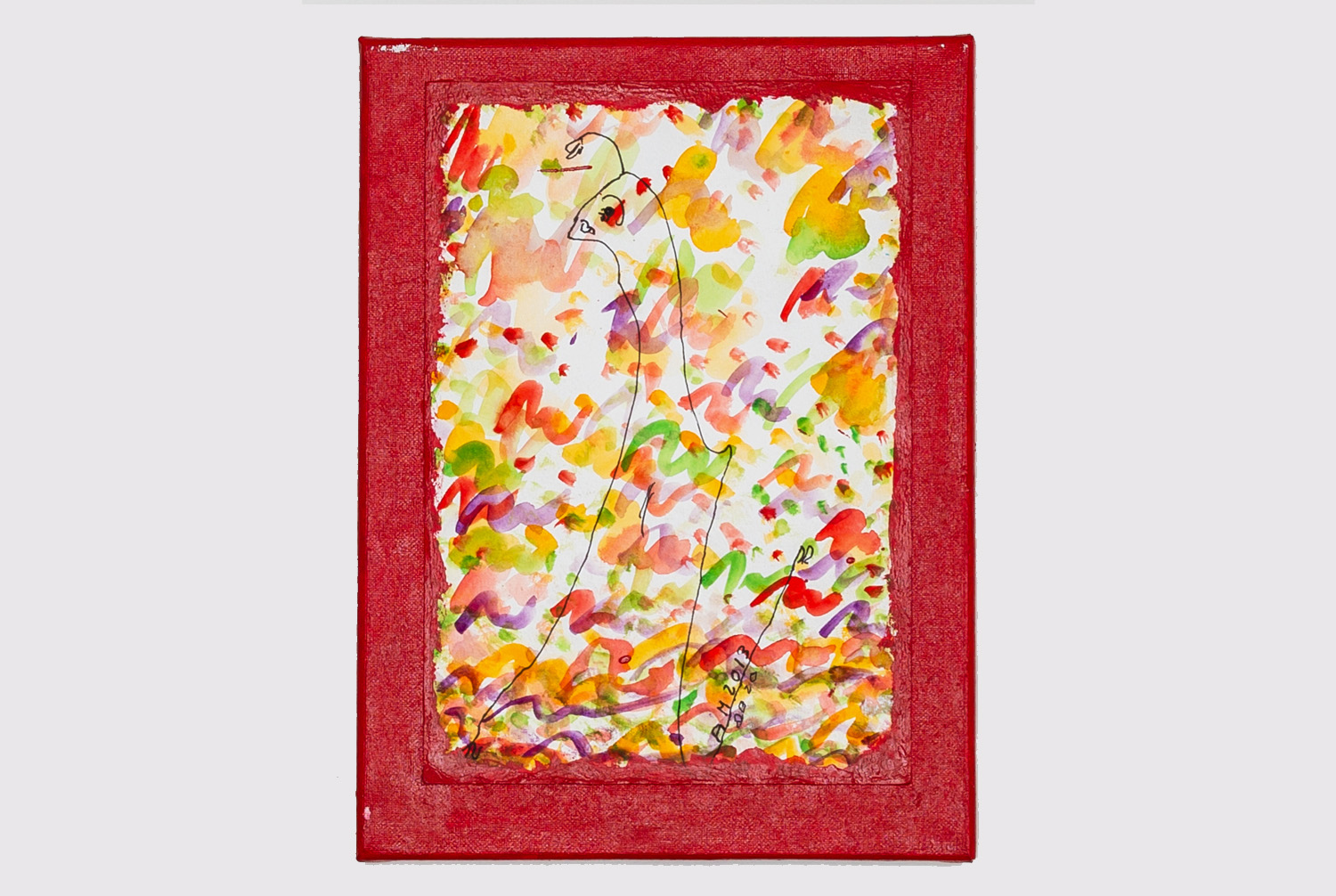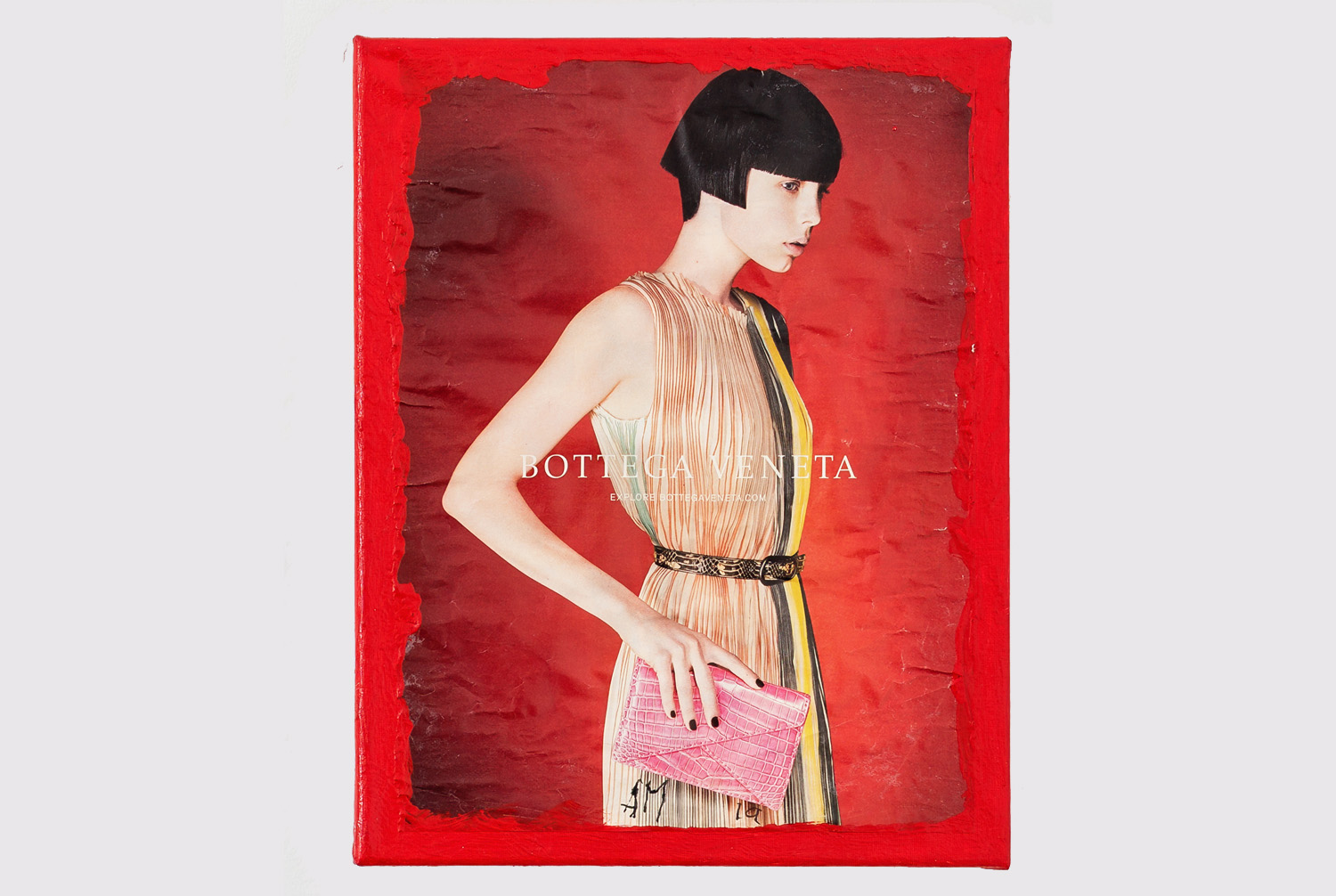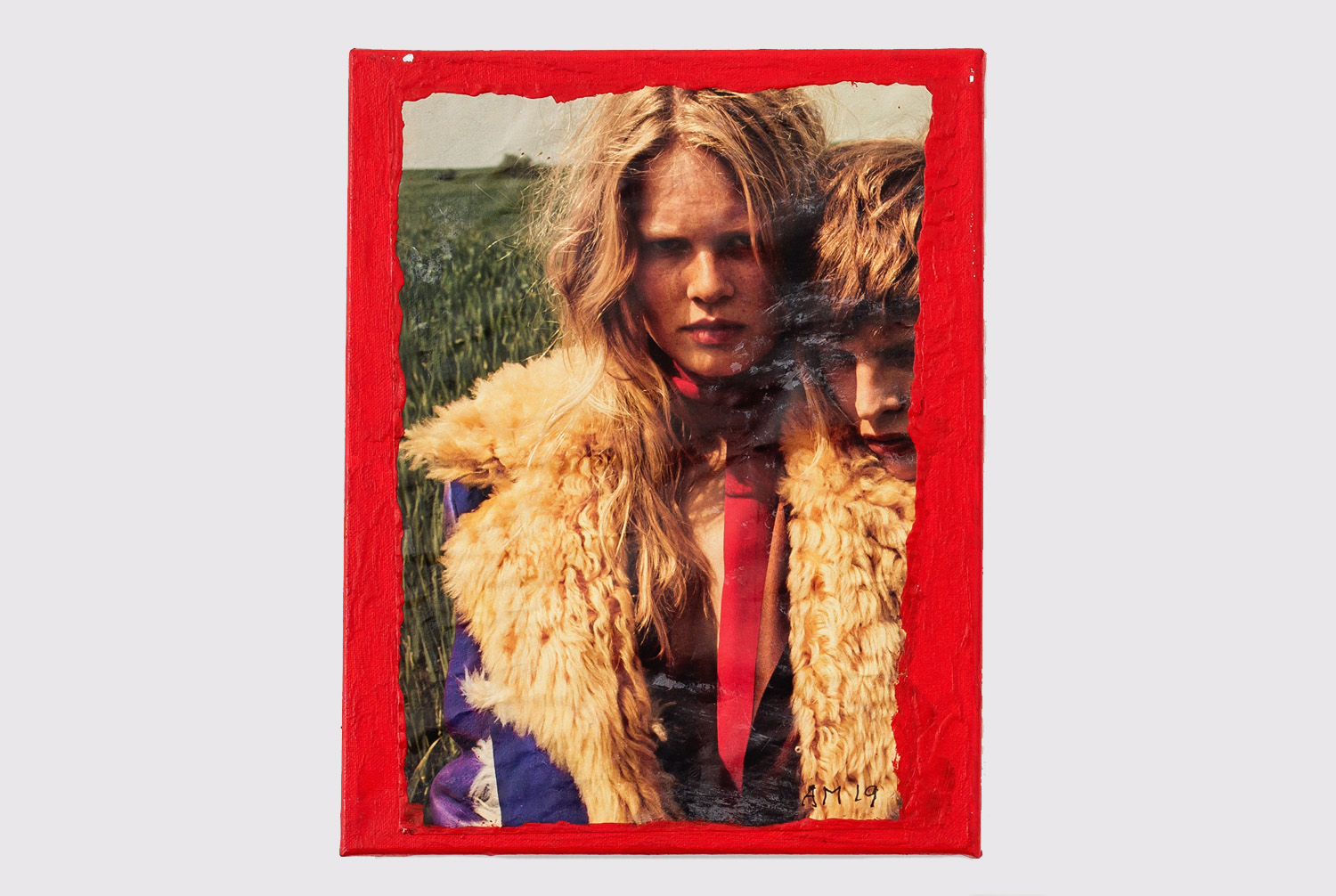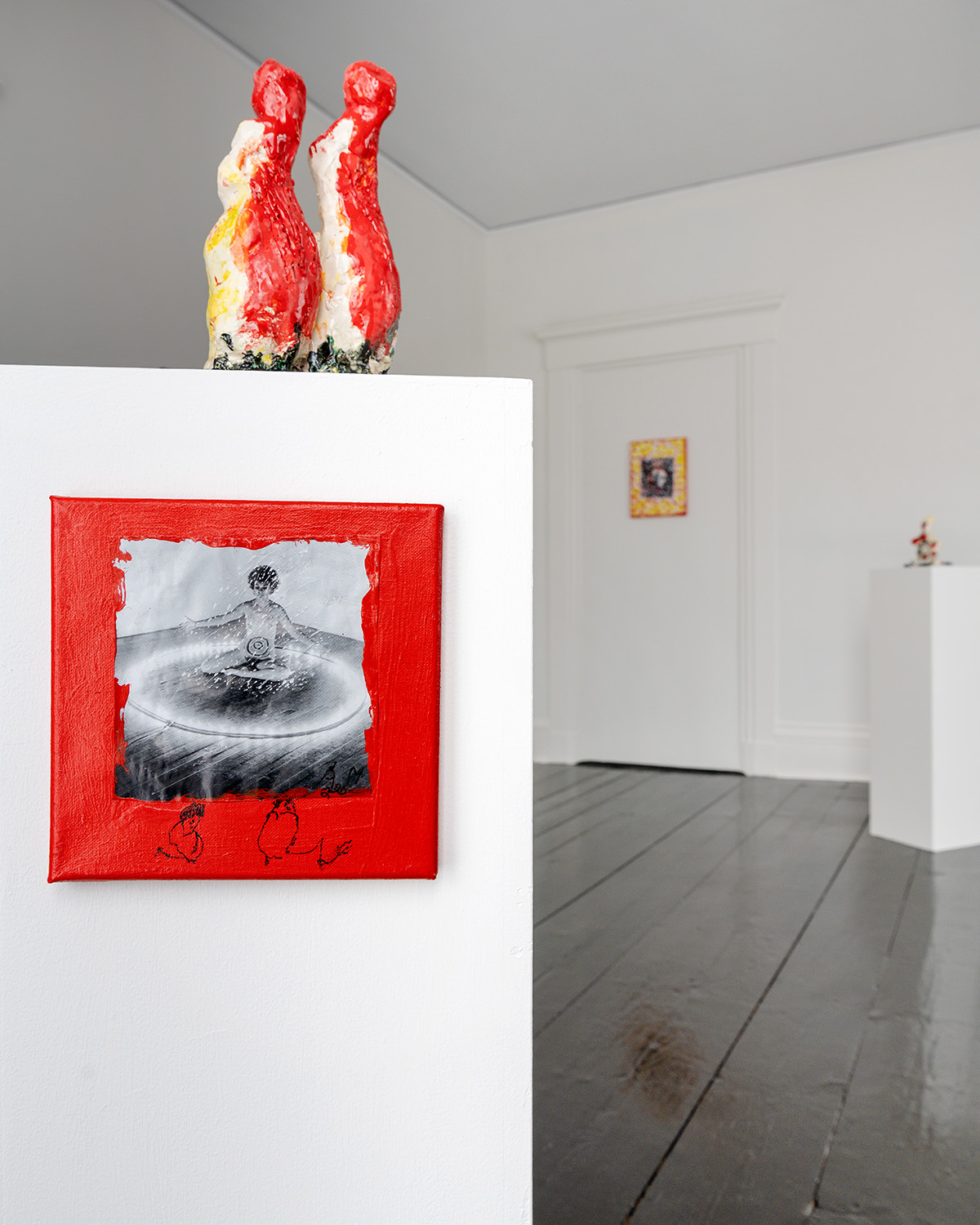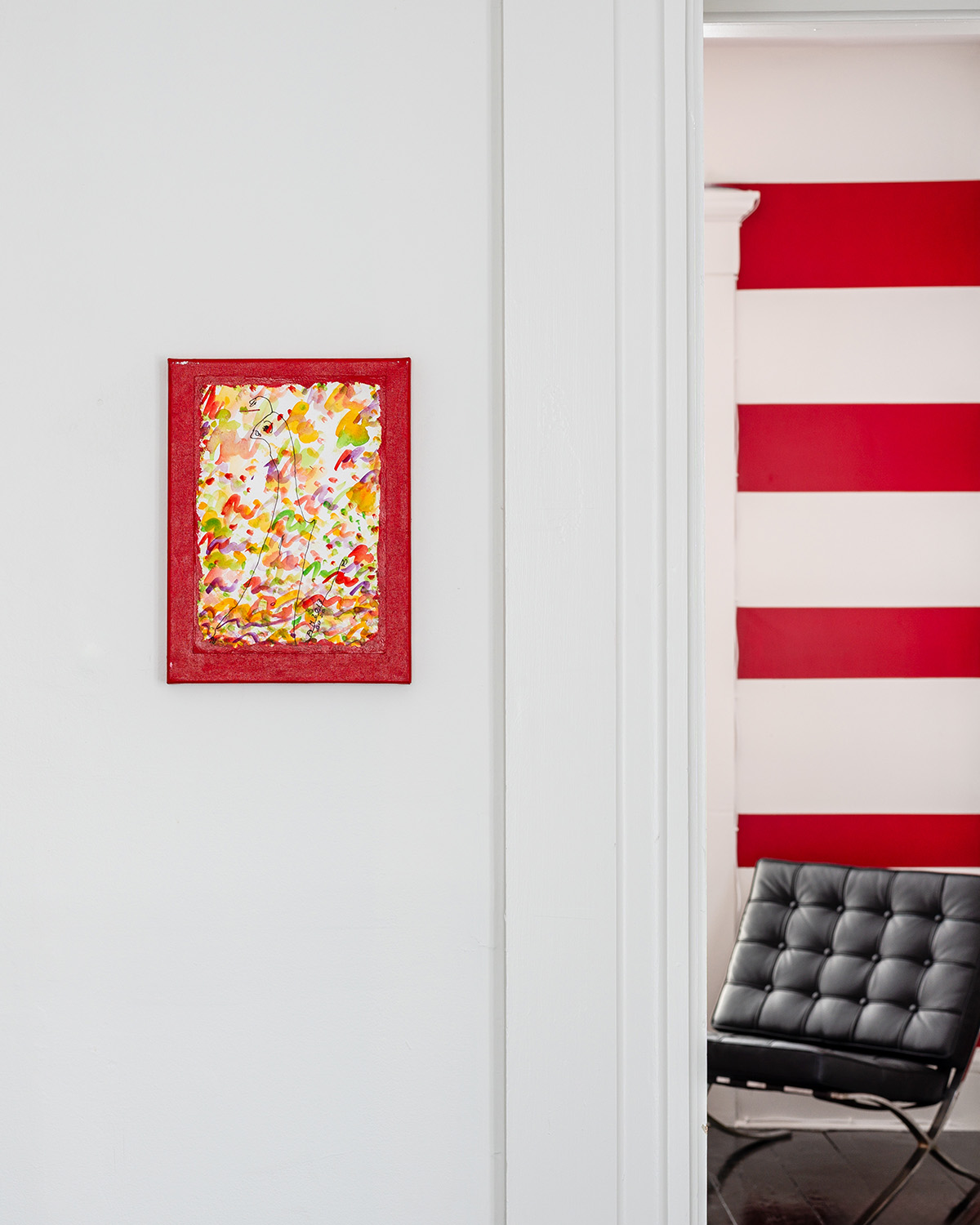Polly Apfelbaum & Alice Mackler: The Potential of Women in Outer Space
April 5th - July 1st 2024
For 30 years now, Polly Apfelbaum has been combining various media (ceramics, textiles, prints, rugs, tapestries, fabric, etc) with gorgeous, vibrant color and pattern to blur the boundaries between painting, sculpture, installation and high art and handicraft. By subverting traditional canons and definitions of art, she liberates herself from these historical limitations of art making. Through paradox, skepticism, humor, and lightness, she employs materials that are usually found in domestic settings, thus assuming a political and feminist ideal, further subverting traditional art hierarchies.
Her work is in the collections of The Museum of Modern of Art, New York; The Whitney Museum of Art of American Art, New York; Brooklyn Museum of Art, New York; The Los Angeles County Museum of Art, Los Angeles; Albright-Knox Art Gallery, Buffalo, NY; The Henry Art Gallery, Seattle, WA; The Dallas Museum of Art, Dallas, TX; Philadelphia Museum of Art, Philadelphia, PA; The Carnegie Museum of Art, Pittsburgh, PA; Pennsylvania Academy of Fine Arts, Philadelphia, PA; The Everson Museum of Art, Syracuse, NY; and the Perez Museum, Miami and numerous others.
She was the recipient of a Pollack-Krasner Foundation grant in 1987, a Guggenheim Fellowship in 1993, an Artist's Fellowship from the New York Foundation for the Arts in 1995, an Anonymous Was a Women Award in 1998, a Richard Diebenkorn Fellowship in 1999, a Joan Mitchell Fellowship in 1999, an Academy Award from the American Academy of Arts and Letters in 2002, and the Rome Prize in 2012.
She currently lives and works in New York City, New York.
On behalf of Polly, Outer Space will donate 5% of its profits from any sales of her work to a non-profit of the artist's choosing.
2 Women in Outer Space
by Stephen WestfallConfluences, community, neighborliness, praise. The Potential of Women in Outer Space celebrates all this, plus friendship, spontaneity, serendipity, and the colors red and white. Polly Apfelbaum met Alice Mackler in workshops at Greenwich House Pottery in the Village in 2011. Polly and her great friend, Joanne Greenbaum were startled and excited by Mackler's ceramic female "figures,” tabletop-sized steles that body-sagged with the weight of clay and were painted in bright glazes that ran a bit, giving off vibes of scary clowns and doyens who were past caring what anybody thought about their makeup.
Mackler had been working in obscurity for years when she came to Greenwich House Pottery in 1999. Her drawings, paintings and collages spoofed and lauded femininity in a modernist language of caricature that seemed to be part Klee and part Art Brut. But it was clay, not Klee, that brought her visibility. With the painter Adrianne Rubenstein, Greenbaum went on to curate a group show at James Fuentes Gallery in 2013 that included 11 of Mackler's sculptures. Mackler's work caught the eye of Roberta Smith, who praised the work in the New York Times. Mackler went on to enjoy a decade of increasing success in her 80's and 90's, showing with the Kerry Schuss Gallery in New York and in LA and Europe. She died earlier this year from Covid complications, leaving an expanding circle of friends and admirers and that's a large part of what this show is about.
Most people, but not all, go to Greenwich House Pottery to learn how to make and glaze pots. There are also artists such as Apfelbaum, Greenbaum, and Mackler, who go there to make another a kind of painting and/or sculpture, with clay and glaze as vehicles. They enjoy being around craftspeople and the YMCA/YWHA comings and goings of a neighborhood community center that's out of the glare of the artworld. Stuff can get done there that is less self-conscious, and advances made that are less freighted with commercial ambition.
What about red and white? A show of two artists who work in different modes of imagery needs an organizing principal and Apfelbaum thought back to an amazing exhibition of red and white quilts mounted by the American Folk Art Museum at the Park Avenue Armory in 2011, around the same time she was getting to know Mackler. Three-hundred years of a fabulous, once neglected art form created by women. Would her dealer be willing to cull some pieces of Mackler's that emphasized that color scheme? Schuss was amenable and now we have red and white examples of Mackler's antic work in a room adjacent to Apfelbaum's pulsating, recombinant patterns in two ceramic tablets and a rug, with red and white stripes painted on the walls as a sort of geometric embrace.
"Alice is in outer space, now,” said Apfelbaum in a recent phone call. Aren't we all?
Stephen Westfall is an artist living and working in New York City. His works are in the collections of the Whitney Museum in New York, the Kemper Museum in Kansas City, the Louisiana Museum in Humlebaek, Denmark, the Munson Williams Proctor Museum in Utica, New York, the Baltimore Museum of Art and the Museum of Fine Arts, Boston. Westfall has received grants and awards from the National Endowment for the Arts, the American Academy of Arts and Letters, the Nancy Graves Foundation, and the Guggenheim Foundation. He received a Rome Prize Fellowship and spent a year at the American Academy in Rome during 2009 and 2010. He is a professor at the Mason Gross School of the Arts at Rutgers University and in the graduate program at Bard University. He is a Contributing Editor at Art in America."The Potential of Women in Outer Space" came about when Roger Buttles asked me if I'd like to do a show in his new gallery in Concord, NH. Roger had been a student of mine at The Art Institute of Chicago.
"The Potential of Women" was the title of an exhibition I did in New York in 2017. That show was, in many ways, a response to the wider political context of 2016. It was structured around a body of hand-woven rugs and ceramic "faces" based on an image found on the cover of a 1963 book with that same title. The cover was designed by Rudolph de Harak, and although the contents of the book did not age well, the cover image became a powerful icon. Unfortunately, too little has changed, and I keep coming back to that image, and that title.
In 2023 I used that image again, this time in grayscale, as a part of "These Boots Are Made for Walkin" at Frith St Gallery in London, also alongside a group of ceramic paintings. When Roger came by my studio last summer, that show was fresh in my mind and I was already working on the red and white "snowball" pieces that are in the show. Those ceramics are based on an amazing book of red and white quilts, a catalog from the "Infinite Variety” show at the Armory in New York. Although I had just done potential faces in grayscale, I was already thinking about them in red and white. The show was originally scheduled for February and I loved the idea of incorporating pieces inspired by the 'snowball' quilt motif featured in "Infinite Variety." And, as if the weather had been clued in to the idea, it snowed the day before the show opened in April.
Outer Space always does two person shows, so when I thought about a pairing, Alice immediately came to mind. Alice only sculpted and painted women, and her work was brilliant with color. She used a lot of red. I had known Alice and her work since around 2009. Joanne Greenbaum, my dear friend and colleague, introduced me to her work when we all worked together at Greenwich House Pottery. It was love at first sight. She was perfect, her unwavering belief in her own talent was emblematic of the idea behind the potential of women pieces. She knew the potential of women better than anybody and I was so honored when Alice agreed. In 2013, the artist and critic Mary Jones wrote insightfully about Alice's ceramic sculptures: Much of her work is ceramic, figures of women who are delightfully phallic, vibrantly hued, and wildly alive. They're cartoony, beautiful, and somehow primordially familiar. Strutting poses and lushly, lumpenly sexy everywhere, these ladies have brought on comparisons to the Venus of Willendorf, Willem de Kooning, and the sculpture of Daumier. At once primal and contemporary, smeared with makeup and dressed to the nines, they are undoubtedly Divine, although it might be in the John Waters sense of the word.
Here we are, two women in outer space. Alice passed away on January 28, 2024 at 92, but if I know Alice she's looking down from wonderland as we look up. Thank you, Alice, for your guts and inspiration. Also to Kerry, Monica and Joanne for being such great friends to Alice.
The Name Was Song
by Robert Frost
Before man came to blow it right
The wind once blew itself untaught,
And did its loudest day and night
In any rough place where it caught.
Man came to tell it what was wrong:
It hadn't found the place to blow;
It blew too hard—the aim was song.
And listen—how it ought to go!
He took a little in his mouth,
And held it long enough for north
To be converted into south,
And then by measure blew it forth.
By measure. It was word and note,
The wind the wind had meant to be—
A little through the lips and throat.
The aim was song—the wind could see.
Alice Mackler (1931 - 2024) lived and worked in New York City. She began making artwork in high school in Williamstown, MA and later attended the Art Students League New York, studying painting with Will Barnett from 1952-54. More than thirty years later, Mackler returned to her arts education and received a BFA from the School of Visual Arts, NY in 1988. In 1999, Mackler began working with clay at Greenwich House Pottery, where she was awarded the Residency and Fellowship program in 2016. In 2013, Mackler had her first solo exhibition hosted by Kerry Schuss Gallery, NY, and in 2018, Kaufmann Repetto presented a solo exhibition of Mackler's ceramics in Milan, IT. Mackler's work has been included in numerous group exhibitions most recently at Kerry Schuss Gallery (2024), Xavier Hufkens, Brussels, Belgium (2023), The Aldrich Contemporary Art Museum, Ridgefield, CT (2018), Maccarone, NY (2016), The Museum of Contemporary Art Tucson, AZ (2016), Nicelle Beauchene Gallery, NY (2016), Blum & Poe, Los Angeles (2015) ; The Jewish Museum, NY (2015), The Box, Los Angeles (2015), Kerry Schuss Gallery, NY, Klaus von Nichtssagend, NY (2014); The Box, Los Angeles (2014), among others.
Mackler, who referred to herself as "a painter who makes sculptures," created intuitive sculptural forms activated by loose, expressionistic brush strokes of glaze which she freely applied with a sensitive hand. Alongside her sculptural practice, she focused on figure drawing and painting, created in life drawing sessions with live models, which also served as the basis of her sculptural work.
In 2023, a ceramic sculpture by Alice Mackler entered the collection of the Whitney Museum of American Art. A monograph on her work published in 2021 by New York Consolidated and Gregory Miller & Co. in association with Kerry Schuss Gallery featuring a forward by Matthew Higgs, an essay by Kelly Taxter, and an interview by Joanne Greenbaum.
On behalf of Alice, Outer Space will donate 5% of its profits from any sales of her work to a non-profit of the artist's choosing.
Alice Mackler, Artist Who Had a Late-Career Rise, Dies at 92
Read full story on the New York Times
Alice Mackler, Artist Who Had a Late-Career Rise in New York, Dies at 92
statement
